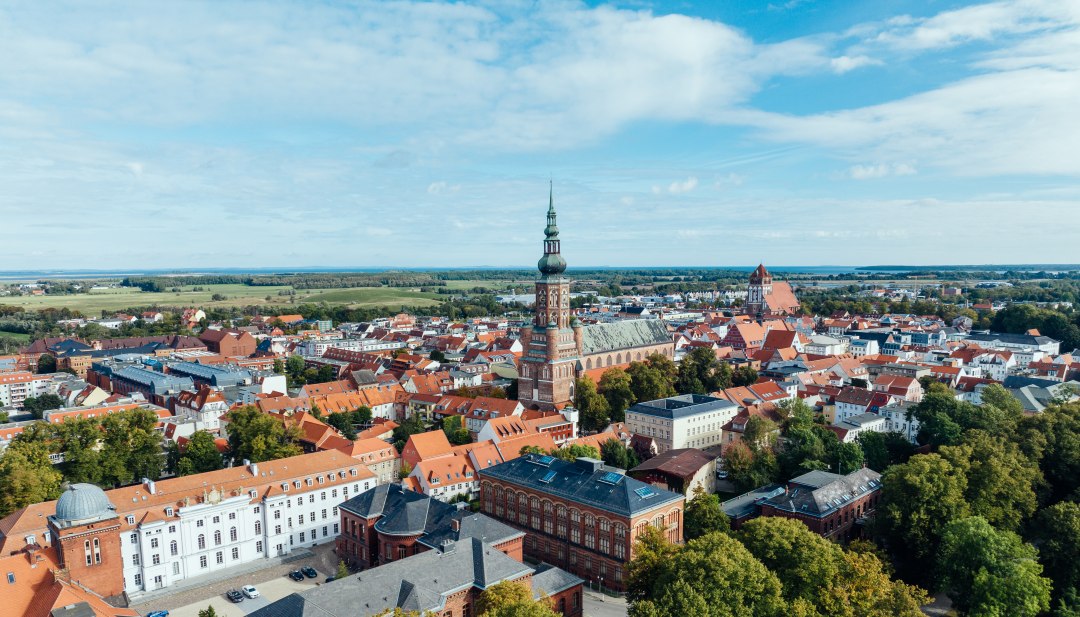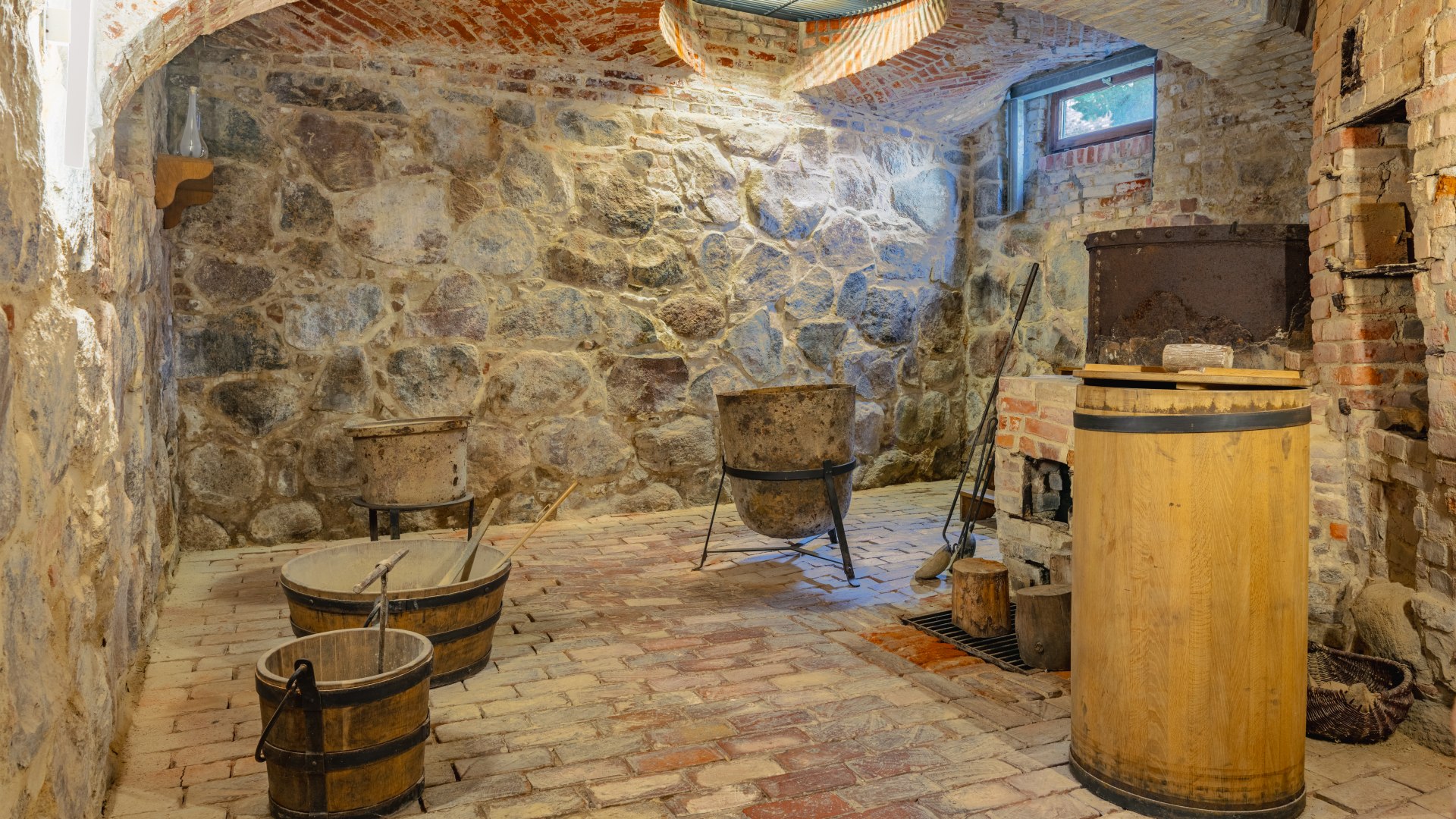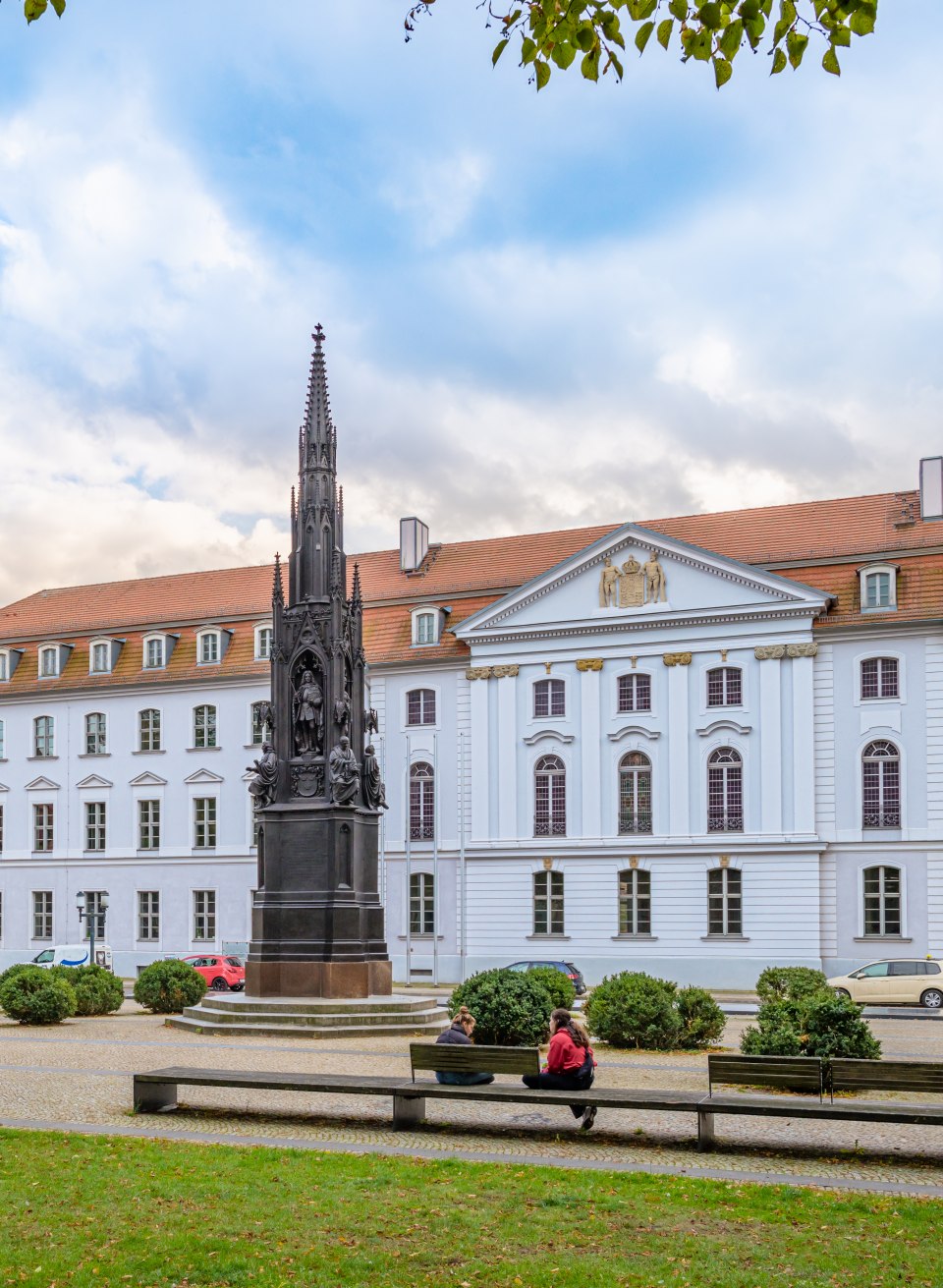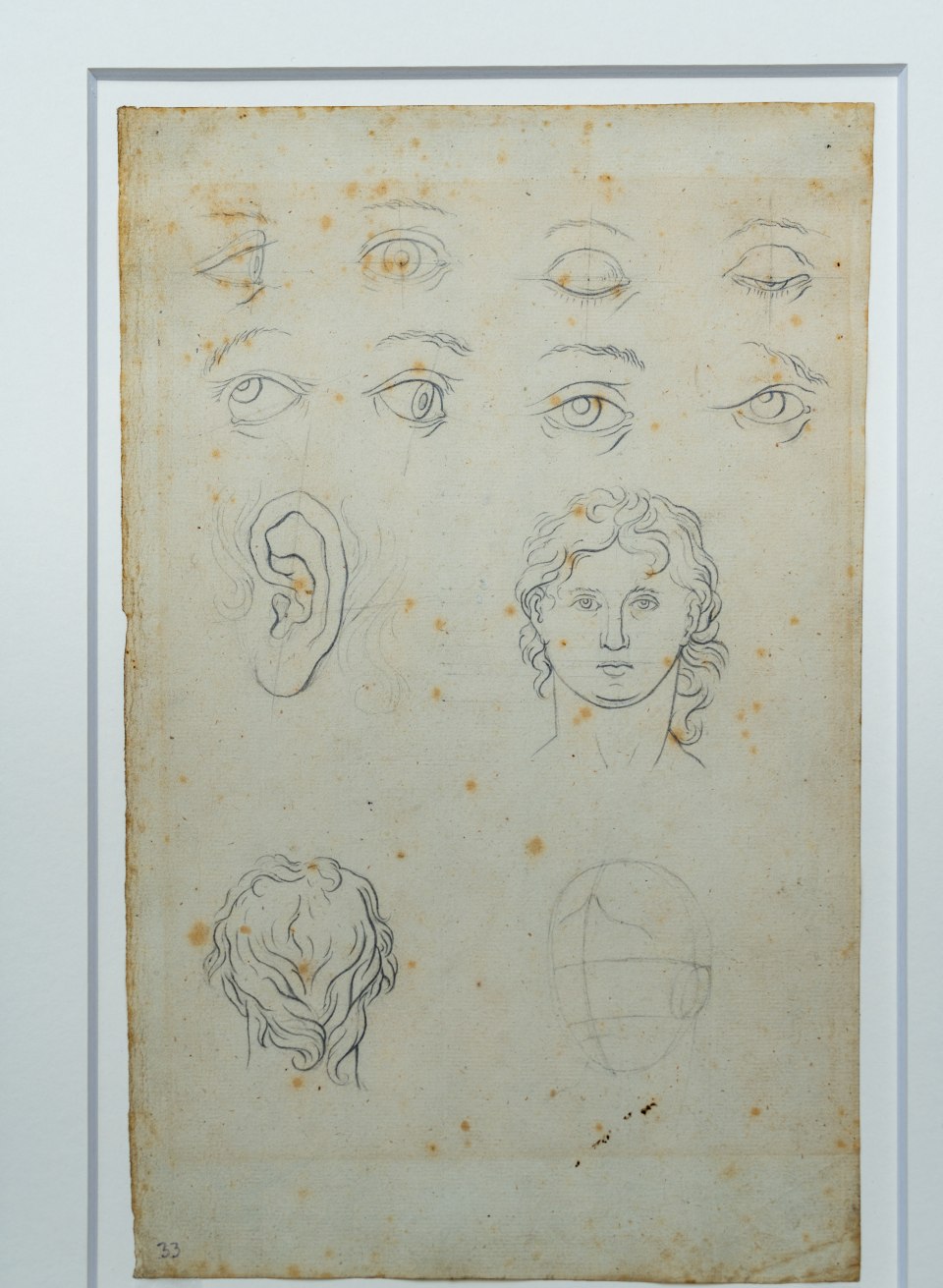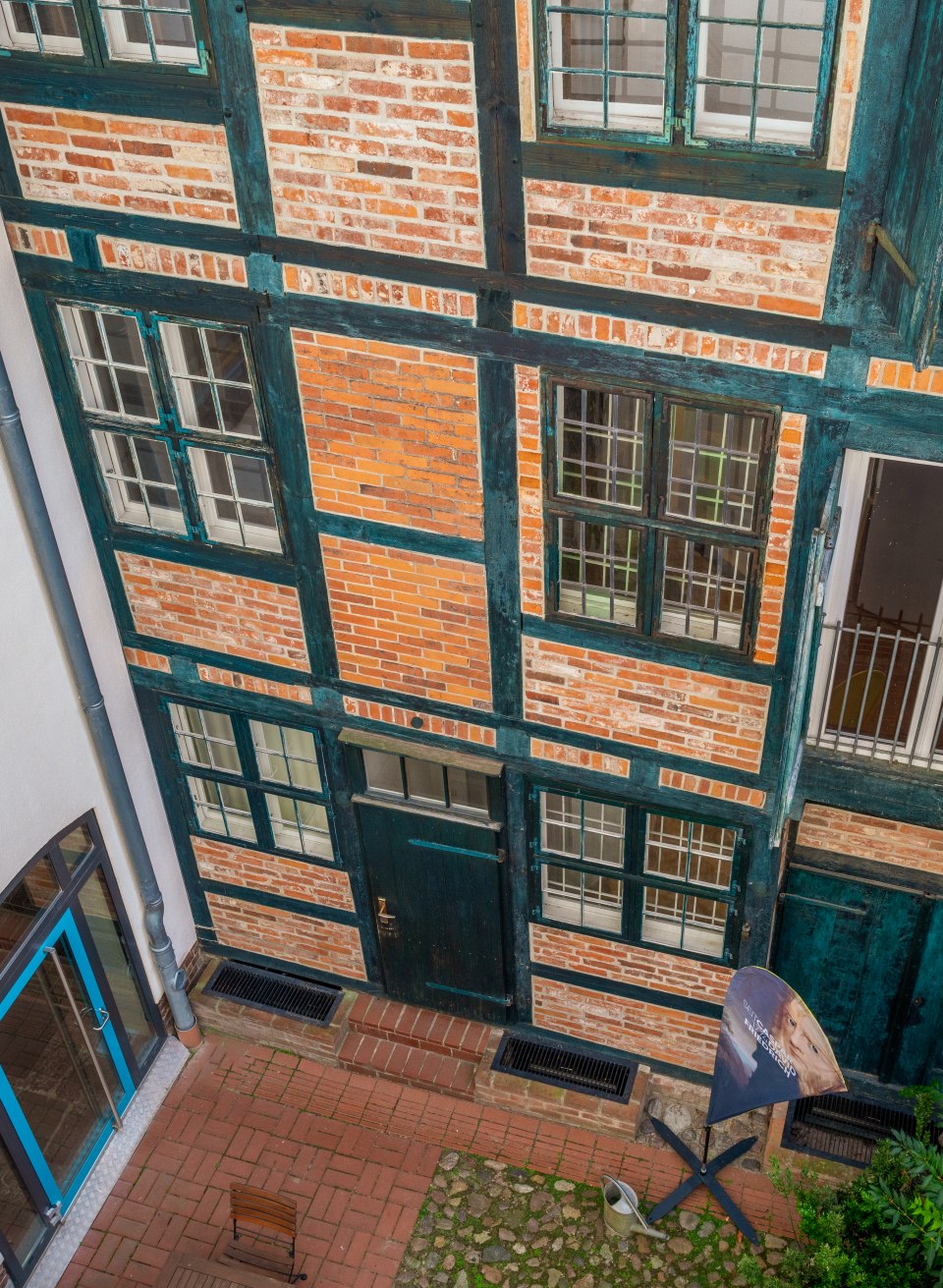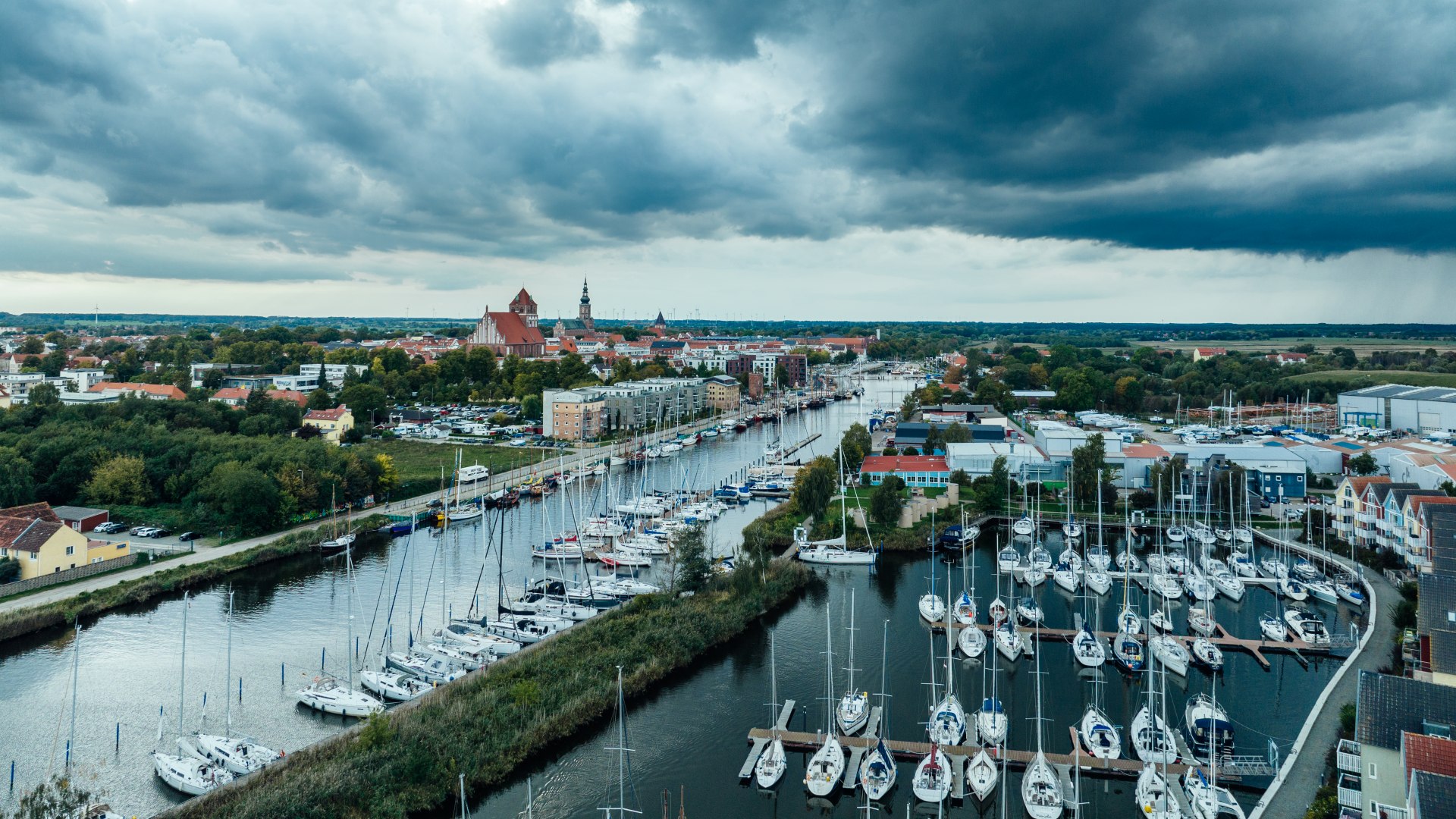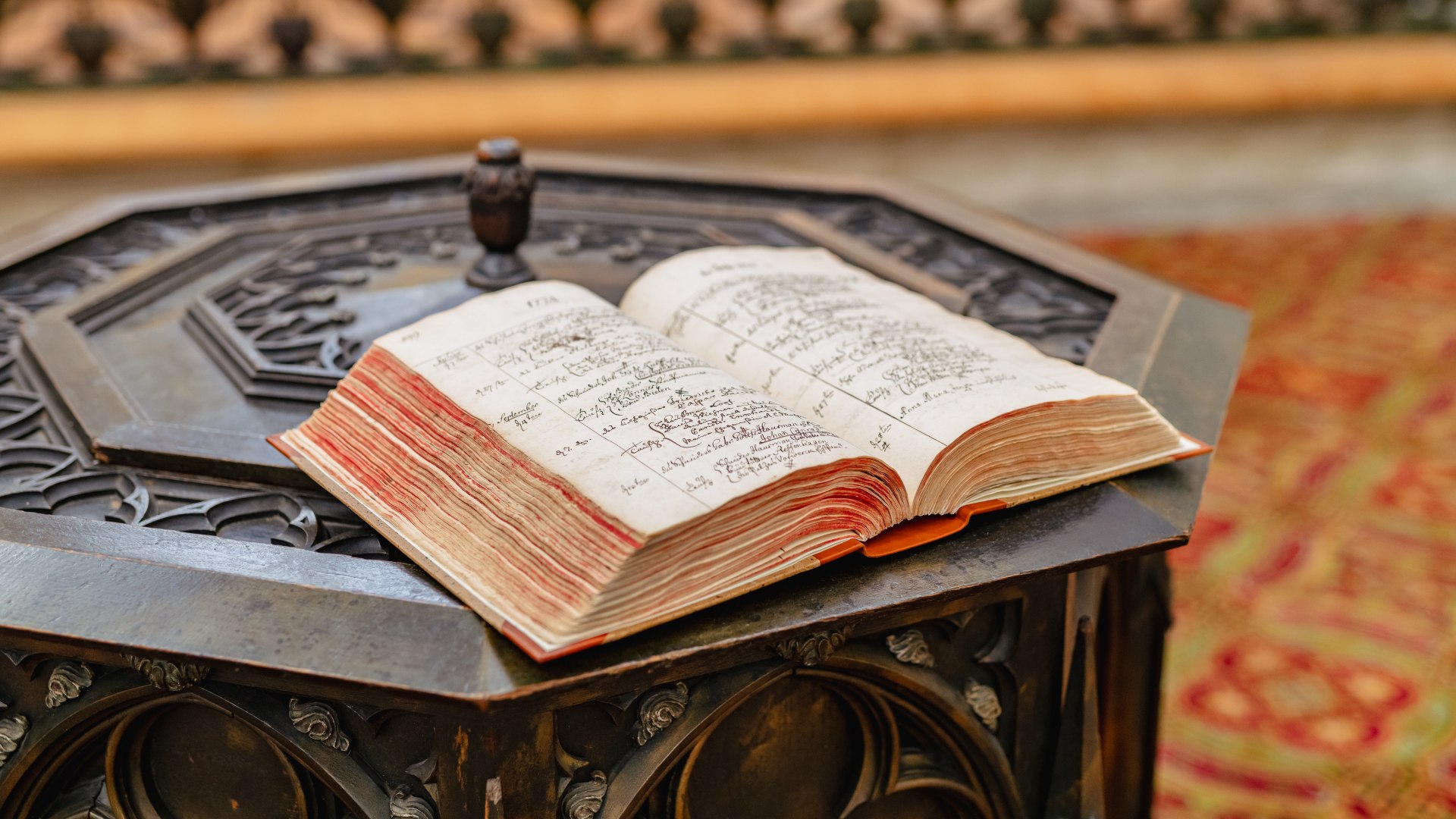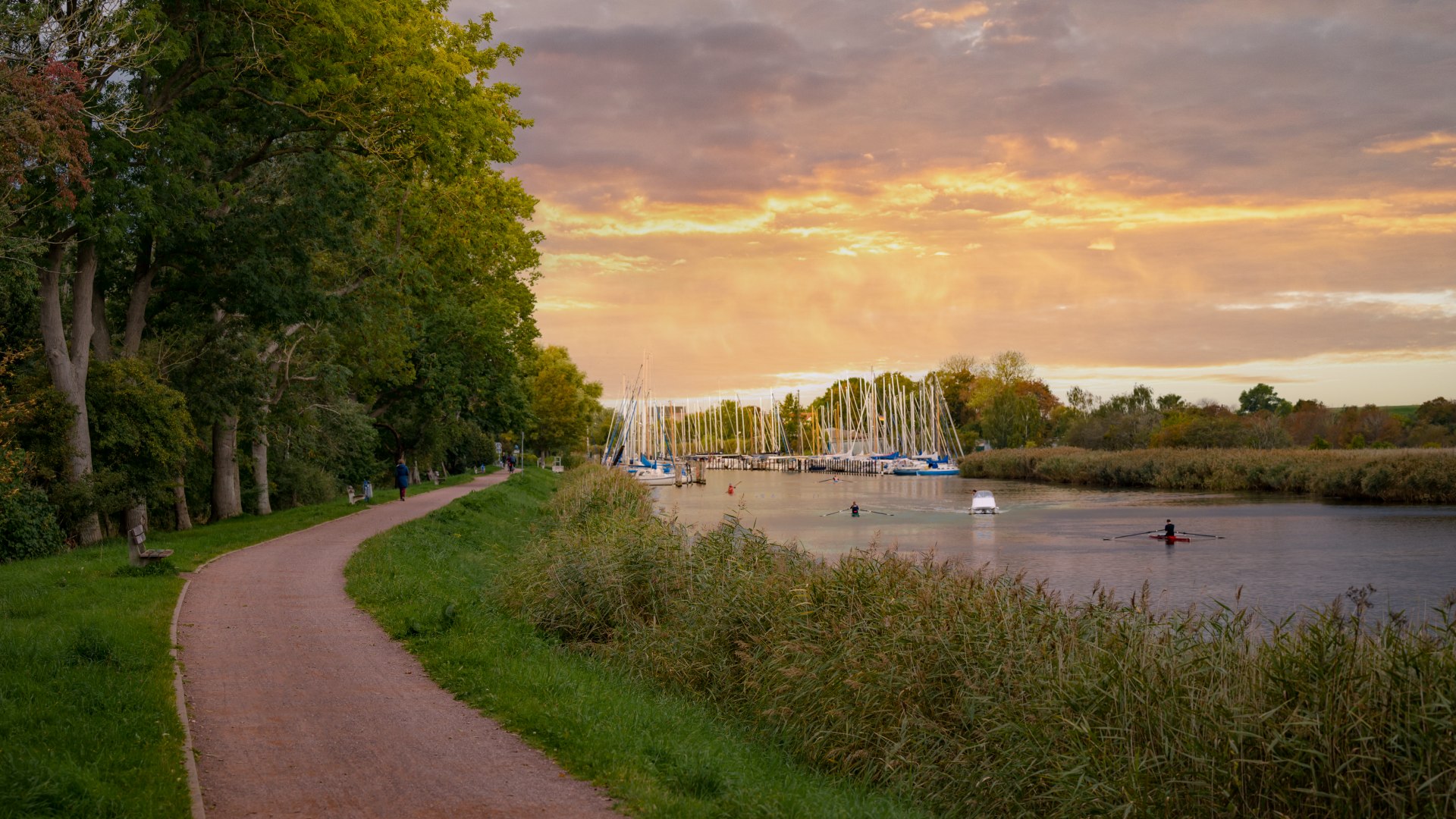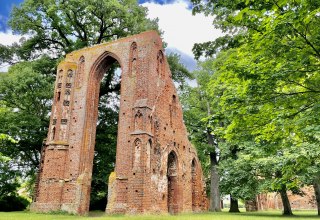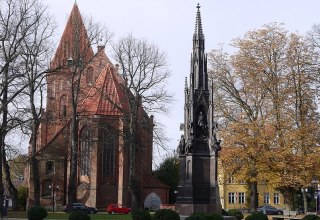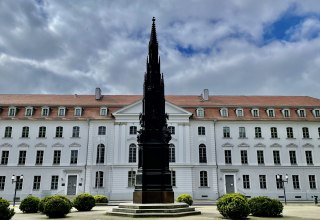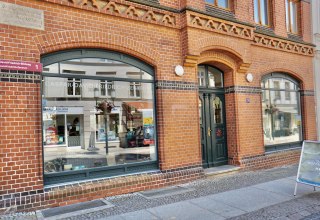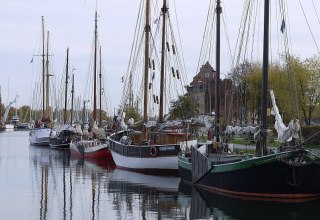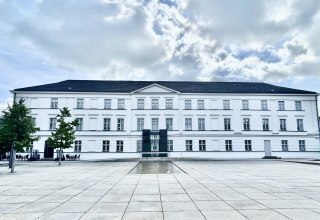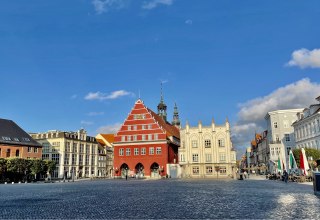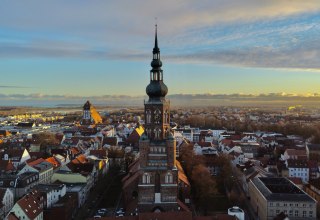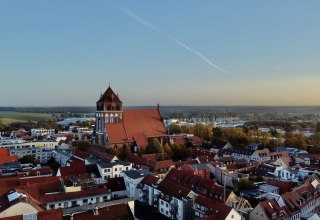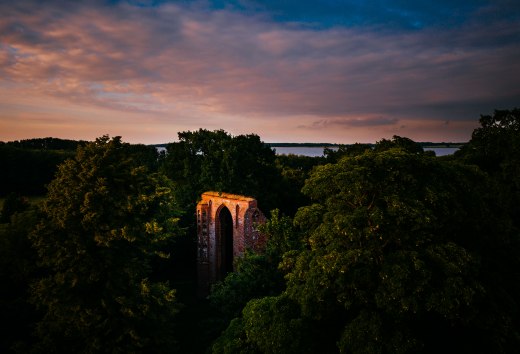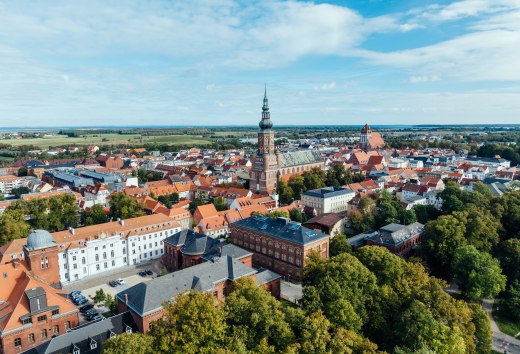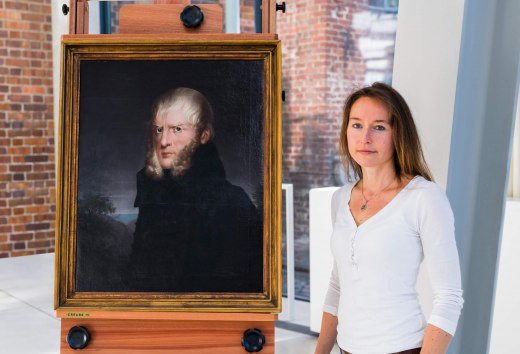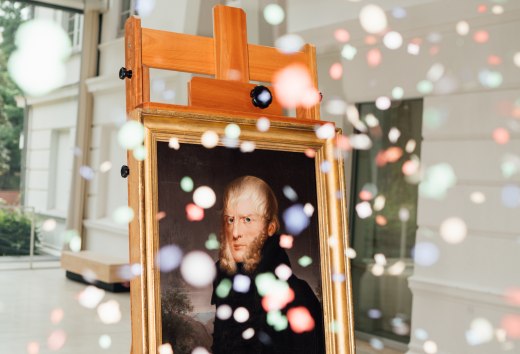Nothing has changed. Nothing at all.
I'm standing at the Storchenwiese meadow in Greifswald, a short distance west of the old town. Gently undulating grass in the morning light, grazing horses, in the background the silhouette of the city with the spires of the three churches rising into the cloudless sky - the almost 100-metre-high tower of St. Nikolai Cathedral with its baroque spire, the squat, massive tower of St. Mary's Church and the steep tent roof of St. Jacob's Church. It is a sight from times long past. Only the chugging of the lawnmower that keeps the New Cemetery tidy behind me is an indication that more than two centuries have passed since Caspar David Friedrich painted this very motif: „Meadows near Greifswald“.
Friedrich, the most important representative of German Romanticism, was born in Greifswald in 1774. 2024 marks the 250th anniversary of his birth. Even now, it is a wonderful occasion to visit the beautiful Hanseatic city on the Baltic Sea and follow in Friedrich's footsteps. The great painter was born here and grew up here until he moved to Copenhagen to study at the art academy and later to Dresden. But he is still present in and around the university city today. I am fascinated by how easy it is to lose myself in Friedrich's world as I walk past merchants' houses, brick churches and through lovingly restored alleyways.

